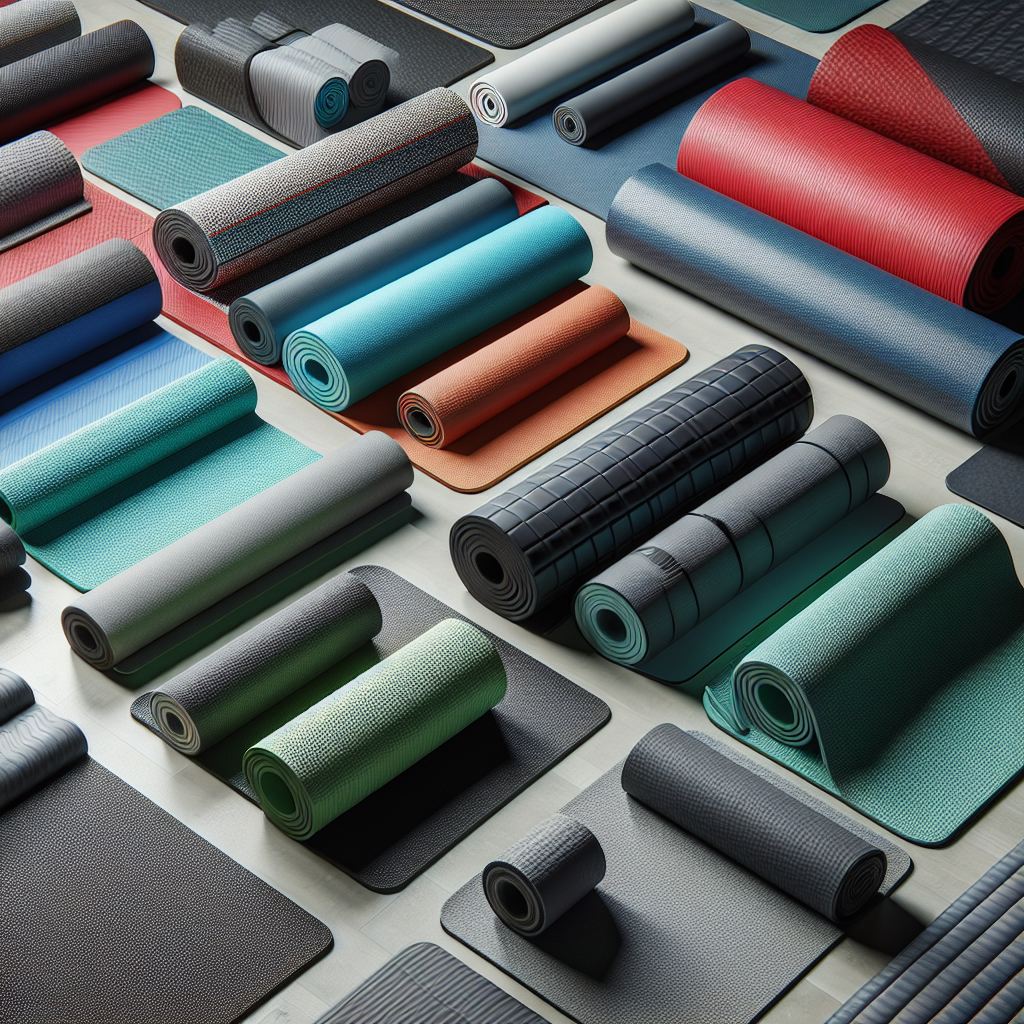
Eco-Friendly Exercise Mats: Sustainable Options for Health-Conscious Athletes
In an era where environmental consciousness is becoming increasingly crucial, health-conscious athletes are looking beyond their fitness routines to consider the sustainability of their gear. Traditional exercise mats, often made from synthetic materials that do not decompose, can contribute significantly to landfill waste and environmental damage. As a response, eco-friendly exercise mats are gaining popularity among yogis, gym-goers, and fitness enthusiasts who wish to align their physical health goals with their environmental values.
The Importance of Eco-Friendly Exercise Mats
Exercise mats play a crucial role in providing comfort and support during workouts, from yoga sessions to high-intensity interval training (HIIT). However, many traditional mats are made from PVC (polyvinyl chloride), which is not only toxic during production but also releases harmful chemicals over time. Moreover, these mats can take centuries to break down in landfills.
By choosing eco-friendly options, athletes can reduce their carbon footprint and support sustainable manufacturing practices. Eco-friendly mats usually boast longer lifespans, are made from renewable resources, and often come from companies that prioritize sustainability.
Key Materials Used in Eco-Friendly Mats
-
Natural Rubber: Often sourced from the sap of rubber trees, natural rubber mats offer excellent grip, cushioning, and durability. Free from petrochemicals, they decompose naturally, making them an excellent choice for astute consumers.
-
Jute: This biodegradable fiber is known for its strength and durability. Jute mats often feature a natural rubber backing, combining sustainability with affordability. They are perfect for yoga practitioners who prefer a natural aesthetic.
-
TPE (Thermoplastic Elastomer): TPE is a synthetic material that is recyclable, and unlike PVC, it is free from toxic chemicals. TPE mats provide excellent cushioning and grip, making them a popular choice for diverse workout styles.
-
Cork: As a renewable material harvested from the bark of cork oak trees, cork mats are durable, lightweight, and naturally antimicrobial. They offer a unique texture that can enhance grip and comfort during practice.
- Recycled Materials: Some mats are made from recycled materials, such as recycled PET from plastic bottles. These mats not only serve their purpose well but also help in reducing plastic waste.
Benefits of Using Eco-Friendly Exercise Mats
-
Healthier Living Environment: Non-toxic materials mean fewer harmful chemicals in your home space. Eco-friendly mats are often free from phthalates, heavy metals, and other toxins.
-
Sustainability: By choosing mats made from renewable resources or recycled materials, you contribute to a circular economy and promote sustainability in the fitness industry.
-
Durability: Eco-friendly mats are designed to withstand regular use, offering excellent performance without compromising on comfort or quality. Many have advanced features like non-slip surfaces and moisture-wicking properties.
-
Versatility: Many eco-friendly mats cater to a range of activities, from yoga and pilates to HIIT and floor exercises, making them versatile options for all fitness levels.
- Style and Aesthetics: Eco-friendly mats often feature beautiful designs and natural aesthetics that can enhance your workout environment, creating a calming space for exercise.
Choosing the Right Eco-Friendly Mat
When selecting an eco-friendly exercise mat, consider the following factors:
-
Activity Type: Different mats cater to various workout styles. For instance, a thick mat may be better suited for high-impact exercises, while a thinner, more textured mat could be preferred for yoga.
-
Material Preferences: Examine the materials and their benefits. Ensure the mat is made from materials that align with your values and health priorities.
-
Care and Maintenance: Some materials may require specific cleaning methods to preserve their integrity. Make sure you choose a mat that you can maintain easily.
- Personal Comfort: Test mats for comfort, thickness, and grip. A good mat should feel comfortable underfoot and provide the support your workout requires.
Conclusion
As awareness about health and sustainability grows, eco-friendly exercise mats provide an opportunity for athletes to make mindful choices that benefit both personal well-being and the planet. Investing in a sustainable mat is not just a trend but a commitment to fostering a healthier lifestyle while aiding in environmental preservation. For health-conscious athletes, the decision to choose eco-friendly exercise mats is a step toward embracing a holistic approach to fitness—one that champions both personal health and the health of our Earth.




